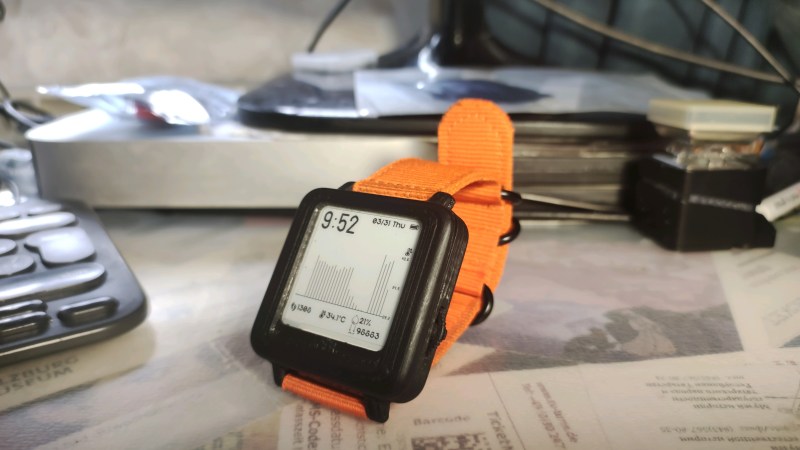
TshWatch is a project by [Ivan / @pikot] that he’s been working on for the past two years. [Ivan] explains that he aims to create a tool meant to help you understand your body’s state. Noticing when you’re stressed, when you haven’t moved for too long, when your body’s temperature is elevated compared to average values – and later, processing patterns in yourself that you might not be consciously aware of. These are far-reaching goals that commercial products only strive towards.
At a glance it might look like a fitness tracker-like watch, but it’s a sensor-packed logging and measurement wearable – with a beautiful E-Ink screen and a nice orange wristband, equipped with the specific features he needs, capturing the data he’d like to have captured and sending it to a server he owns, and teaching him a whole new world of hardware – the lessons that he shares with us. He takes us through the design process over these two years – now on the fifth revision, with first three revisions breadboarded, the fourth getting its own PCBs and E-Ink along with a, and the fifth now in the works, having received some CAD assistance for battery placement planning. At our request, he has shared some pictures of the recent PCBs, too!
And sensor-packed, it is! There’s a MAX30100 for heart rate measurement, DS3231 RTC for timekeeping and interrupts, MLX90615 IR temperature sensor for contact-less skin temperature measurements, an LSM6DS3C IMU with, so to say, hardware-accelerated pedometer capabilities, and a BME680 air quality, humidity, pressure and temperature sensor. To keep the watch low-power despite the ESP32’s appetite, [Ivan] has conquered the ESP32’s ULP – a low-power co-processor capable of talking to all the project’s I2C devices. Having never written ULP Assembly before, he eventually wrote ULP drivers for all of the devices involved. As a result, it can already survive for over 36 hours at a single charge, and he is aiming to make it last a week.
[Ivan] invites you to join his effort – it takes time to build a device for a far-reaching and almost sci-fi realm goal like this, and he could use help in under-explored areas. He’s been mostly working with hardware and firmware so far, and if you’d like to help with software, datalogging, design/CAD, or improve any other areas, do join the Hackaday.io chatroom and see how far we can get from here! Hardware feature progress is being tracked on GitHub, and there’s also a video in Russian explaining the hardware architecture of the fourth revision and the challenges, caringly subtitled in English for us, embedded below.
What are we hackers looking for in a wrist-worn device aimed to help us day-to-day? We’ve discussed that with you all before.
TshWatch Helps You Learn More About Yourself
Source: Manila Flash Report
0 Comments